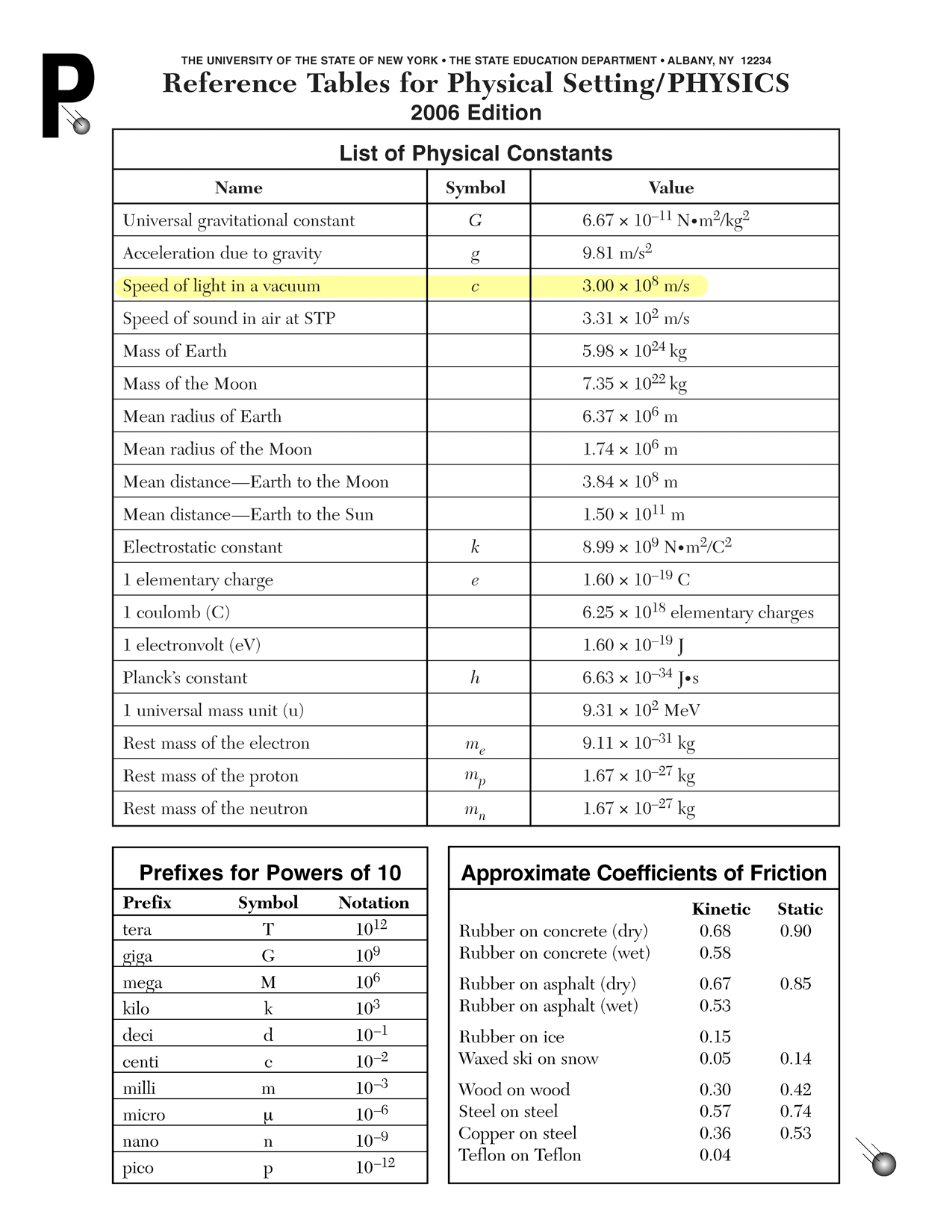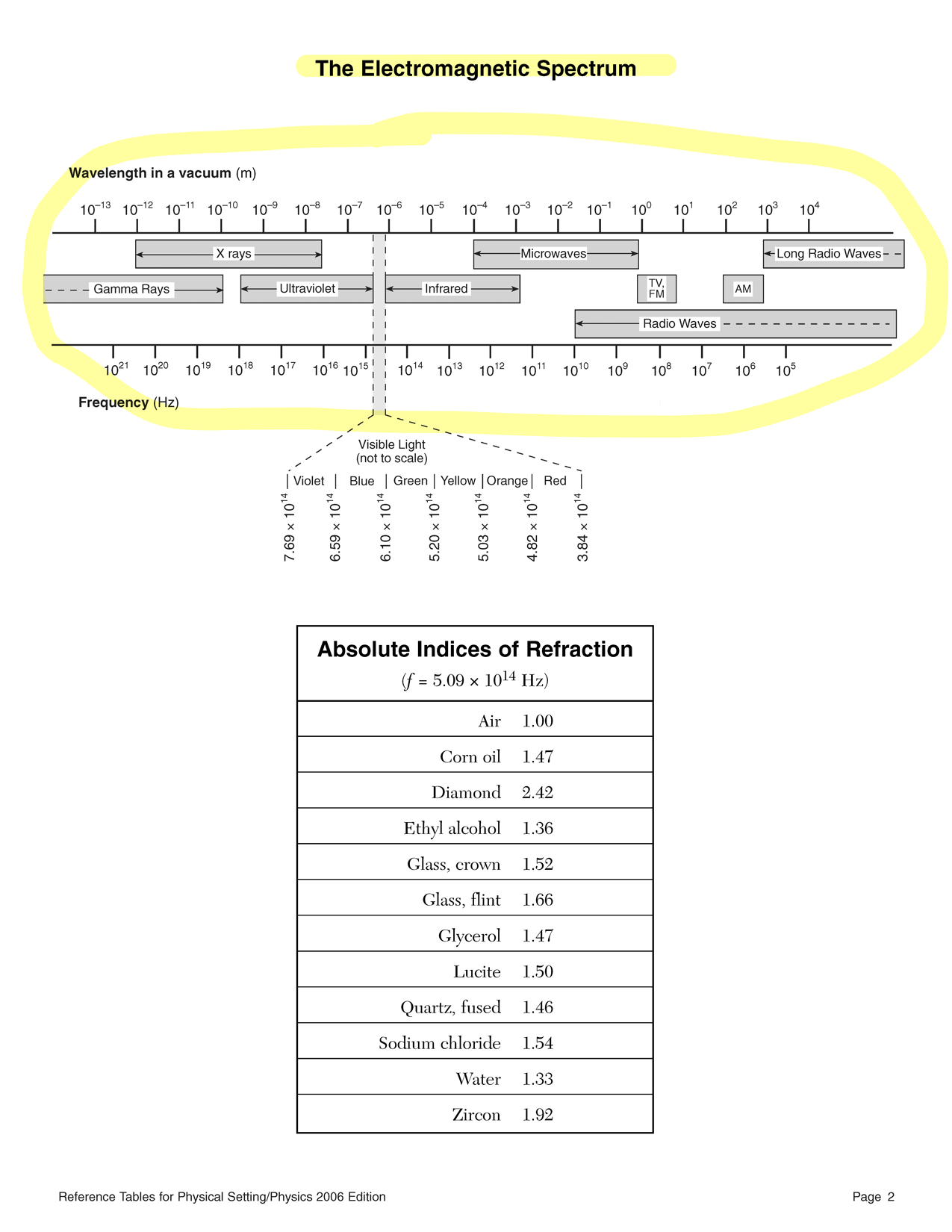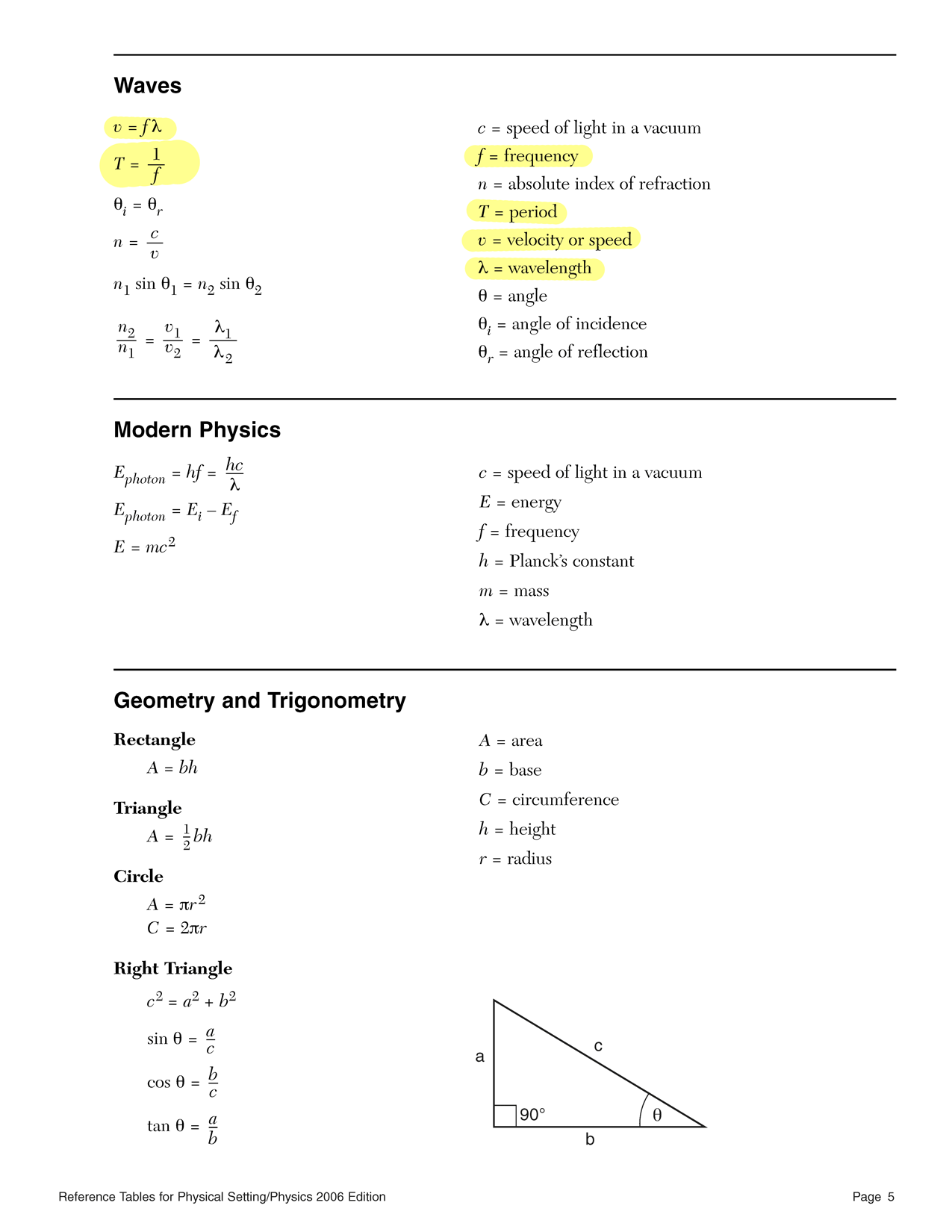Physics A: Problem Set 21: Electromagnetic spectrum
recommended reading
| High Marks: | 4:72–4:80 |
| Barron's Let's Review: | n/a |
| physics.info: | Electromagnetic spectrum |
| Wikipedia: | Electromagnetic radiation, Electromagnetic spectrum |
| Mr. Machado: | 14 The Electromagnetic Spectrum |
classwork
- Given three electromagnetic waves with the following frequencies, identify the bands in the electromagnetic spectrum to which they belong and calculate their respective wavelengths. (State all numerical answers with 3 significant digits and include a unit. Refer to the Reference Tables for Physical Setting/PHYSICS for unit prefixes and band delineations.)
- f = 235 THz
- f = 37.7 MHz
- f = 6.97 kHz
- λ = 3.15 mm
- λ = 537 μm
- λ = 7142 pm
All calculations for this problem are basically done with this equation…
v = fλ
My recommendation is to convert the frequencies so the units are all hertz and the numbers are all scientific notation first, then look up the bands in the reference tables and do the calculations. I decided to write these answers without scientific notation because that was my choice. You don't have to do it this way.
f = 235 THz
f = 2.35 × 1014 Hz
infraredλ = c f λ = 3.00 × 108 m/s 2.35 × 1014 Hz λ = 1.28 μm f = 37.7 MHz
f = 3.77 × 107 Hz
radio waveλ = c f λ = 3.00 × 108 m/s 3.77 × 107 Hz λ = 7.96 m f = 6.97 kHz
f = 6.97 × 103 Hz
radio waveλ = c f λ = 3.00 × 108 m/s 6.97 × 103 Hz λ = 43.0 km
This time, convert the wavelengths so the units are all meters and the numbers are all scientific notation first, then look up the bands in the reference tables and do the calculations. I decided to write these answers using scientific notation because otherwise they would be really long and hard to read. You probably should do it this way too.
λ = 3.15 mm
λ = 3.15 × 10−3 m
microwavef = c λ f = 3.00 × 108 m/s 3.15 × 10−3 m f = 9.53 × 1010 Hz λ = 537 μm
λ = 5.37 × 10−4 m
ir or microwavef = c λ f = 3.00 × 108 m/s 5.37 × 10−4 m f = 5.59 × 1011 Hz λ = 7142 pm
λ = 7.142 × 10−9 m
uv or x-rayf = c λ f = 3.00 × 108 m/s 7.142 × 10−9 m f = 4.20 × 1016 Hz
- State two fundamental facts of physics. Answer each of these questions using exactly two words.
- What is the source of all magnetism?
- What is the source of all electromagnetic waves?
Moving charge
Accelerating charge





